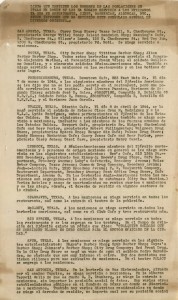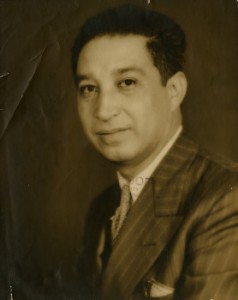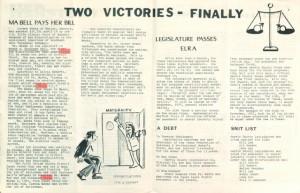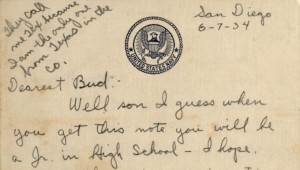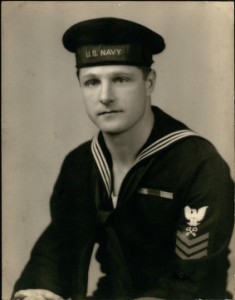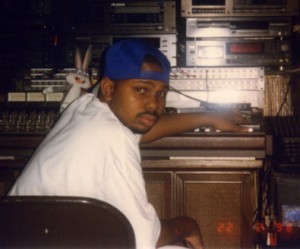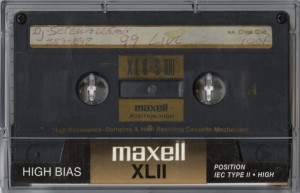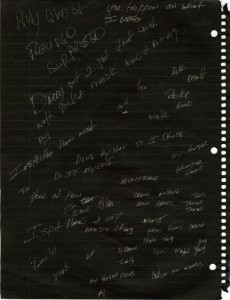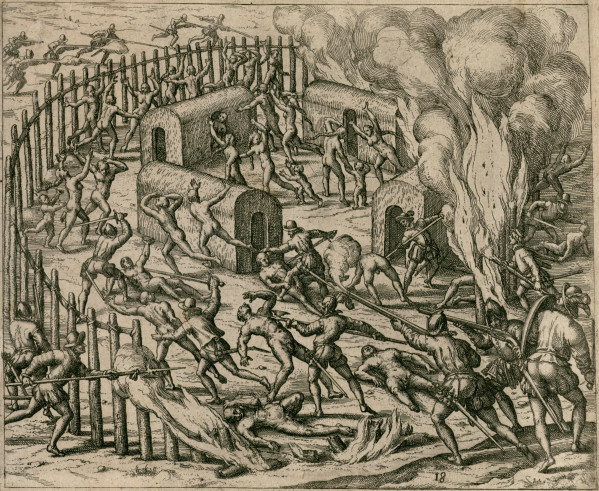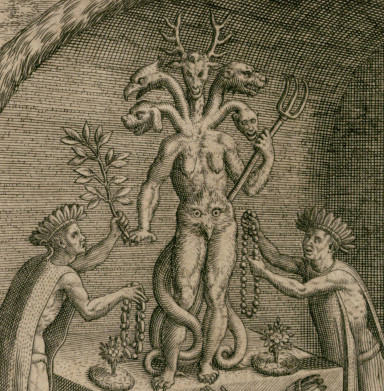
The digital collection formerly called Photographs from the Alonso S. Perales Papers has been expanded and renamed Selections from the Alonso S. Perales Papers. In addition the the previous published photographs, the collection now contains documents that further highlight Perales’ life and career as a civil rights lawyer, diplomat, and political leader.
Alonso S. Perales (1898-1960) was one of the most influential Mexican Americans of his time. Perales saw himself as a defender of la raza, or race, especially battling charges that Mexicans and Latin Americans were inferior and a social problem. Perales was one of the founders of the League of United Latin American Citizens (LULAC) in 1929 and helped write LULAC’s constitution, and he served as the organization’s second president.
An intellectual who firmly believed in the law, Perales wrote about civil rights, religion and racial discrimination, which he argued “had the approval of the majority.” His work included the pamphlet “Are We Good Neighbors?” and the two-volume set, “En defense de mi raza.” A member of the American Legion and the San Antonio Chamber of Commerce, Perales was also a columnist for “La Prensa” and other Spanish-language newspapers.
View the complete collection in the UH Digital Library, or learn more about the conference that accompanied the release of the original digital collection, In Defense of My People: Alonso S. Perales and the Development of Mexican-American Public Intellectuals.
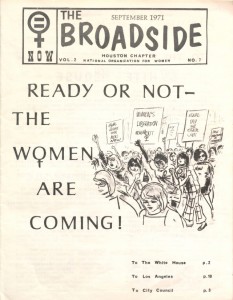 The Houston and Texas Feminist and Lesbian Newsletters collection contains issues of newsletters and similar periodicals from more than a dozen feminist and lesbian organizations and community groups from Houston, Austin, and other areas of Texas. These publications highlight the political, social, and cultural interests of the various organizations and groups, primarily during the 1970s and 1980s. These groups were concerned with such topics as women’s equality, gay and lesbian rights, and sexual and domestic violence.
The Houston and Texas Feminist and Lesbian Newsletters collection contains issues of newsletters and similar periodicals from more than a dozen feminist and lesbian organizations and community groups from Houston, Austin, and other areas of Texas. These publications highlight the political, social, and cultural interests of the various organizations and groups, primarily during the 1970s and 1980s. These groups were concerned with such topics as women’s equality, gay and lesbian rights, and sexual and domestic violence.
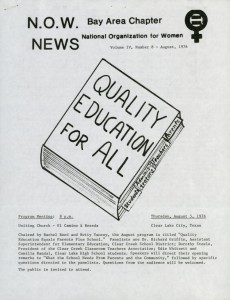 Among the specific topics addressed in these publications are the Equal Rights Amendment, Title IX, and a number of local and national elections. Relevant issues and events, such as appearances by popular and sometimes controversial activists and celebrities, equal rights negotiations with businesses, offensive fraternity hijinks, and the portrayal of women in popular culture, are also documented. Some periodicals provide information about networking and social opportunities.
Among the specific topics addressed in these publications are the Equal Rights Amendment, Title IX, and a number of local and national elections. Relevant issues and events, such as appearances by popular and sometimes controversial activists and celebrities, equal rights negotiations with businesses, offensive fraternity hijinks, and the portrayal of women in popular culture, are also documented. Some periodicals provide information about networking and social opportunities.
The newsletters are part of the Carey C. Shuart Women’s Archive and Research Collection, which contains the records of women’s organizations and the papers of prominent Texas women. These materials document the range of women’s concerns, the ways in which women have come together to achieve their goals, and the impact they have had on the world around them.
Special Collections is happy to announce the publication of our latest collection in the UH Digital Library, the William Slough USS Houston Letters. This collection of letters from William (Bill) Slough to his family while he was aboard the USS Houston (CA-30) vividly documents what life was like for sailors prior to World War II. The letters were sent from 1934-1936, starting just after he enlisted in the Navy on May 15, 1934.
In the letters, Slough discusses myriad aspects of the military life. He worries about family and money, how to spend his leave, and how to gain much desired promotions and pay raises. He also writes about learning to love travel and deciding to pursue a career in the military. Most of the letters originate from Long Beach, California, the Houston‘s home base at the time, but Slough also discusses the ship’s travels, including time spent at Guantanamo Bay, Cuba. The digital collection also includes a photograph of Slough in his dress blues and copies of his Crossing the Line certificate and subpoena.
William Slough was born on May 19, 1914, in Missouri but later moved to Texas, where he lived before joining the Navy. In addition to serving on the Houston, a heavy cruiser, he also served on the USS Cowpens (CVL-25), an aircraft carrier. He served in World War II, and after the war he continued in the Navy Reserves for 20 years. Slough was proud to say that with his service, every generation of his family had served in the United States military, beginning with Matthias Slough in the Revolutionary War. William Slough died on Dec. 9, 1991, in Victoria, Texas.
The William Slough USS Houston Letters are part of the larger Cruiser Houston Collection. Another digital collection related to the Houston is the USS Houston Blue Bonnet Newsletters.
Get a sneak peak and the upcoming DJ Screw and the Rise of Houston Hip Hop exhibit in the new DJ Screw Photographs & Memorabilia digital collection!
DJ Screw was born Robert Earl Davis, Jr. in 1971. As a teenager on the South side of Houston, he began DJ-ing and making mixtapes of his favorite rap songs for friends. By the early nineties, he had begun slowing down the music on his tapes to a hypnotic crawl and emphasizing certain words and phrases by repeating them manually. Screw sold these “chopped and screwed” mixtapes directly to eager fans.
Friends and local rappers began ordering personal tapes from Screw, and he invited the rappers to freestyle, or improvise, over beats at the beginning and end of the tapes. This group became known as the Screwed Up Click, and over time, the rappers themselves developed followings and many released successful independent solo albums. in 1998 DJ Screw opened up Screwed Up Records and Tapes, a shop that sold only his mixtapes. It is estimated that DJ screw sold hundreds of thousands of mixtapes, in addition to releasing four studio albums.
On November 16, 2000, DJ Screw was found dead in his recording studio at the age of 29, his death ruled an overdose of codeine and other drugs.
Among the items in this collection are photos of DJ Screw and the Screwed Up Click and funeral programs for DJ Screw and other SUC members. The collection also includes a “screw tape” and the notebook of rapper HAWK. In the notebook, you can see HAWK’s creative process as he works out rhymes for his raps. You can also see how well he played dominoes, since he kept score in the same notebook.
These materials are a part of the larger exhibit that will be on view at the M.D. Anderson Library from March 19 through September 21. At the conclusion of the exhibit, selected materials will be added to this digital collection.
Also in March, the University of Houston and Rice University will host Awready!: The Houston Hip Hop Conference. To learn more about the conference and related events, and to register, check out the conference web site.
Watch this blog for more information about the exhibit, conference, and future digital collection additions.
Special Collections is excited to announce the publication of a new digital collection, Theodor de Bry’s America. This collection of copper plate engravings depicts the arrival of the Spaniards in the New World. The engravings are taken from the 16th century book Americae, volume IV of Theodor de Bry‘s Grandes Voyages series, a collection of 30 books documenting the new age of exploration.
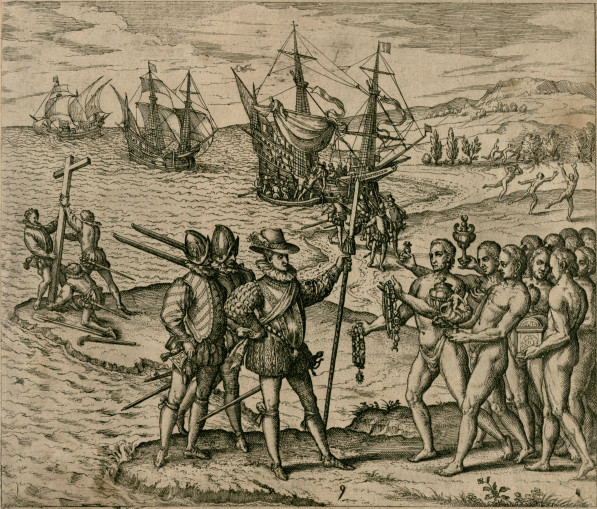
Plate 9: "Columbus, as he first arrives in India, is received by the inhabitants and honored with the bestowing of many gifts"
The illustrations in this collection depict a variety of scenes related to Spanish exploration. Christopher Columbus is featured in many of illustrations, both in Spain and in the New World. Violence perpetrated on both the Spaniards and the Native Americans is also depicted in detail.
The engravings are in very good condition and can be examined in detail in the UH Digital Library. While only the engravings have been digitized as part of this effort, Special Collections holds a near-complete first edition of the volume. This edition is printed in German, with the exception of the title page, which comes from a first edition printed in Latin. This copy is missing plates 2, 3, 19, 21, and 23, along with an original map.
Take some time to examine these 22 images! Not only do they represent some of the earliest depictions of the exploration of the New World, but the details in the engravings are fantastic. If you’d like to learn a little more about Theodor de Bry and his Grande Voyages, check out Episode 893 of Dr. John Leinhard’s “Engines of Our Ingenuity” radio program.
